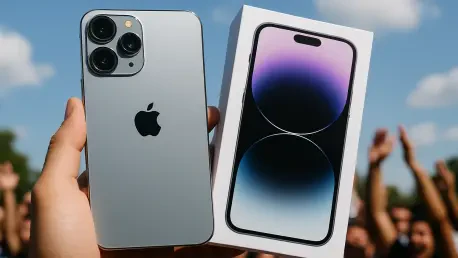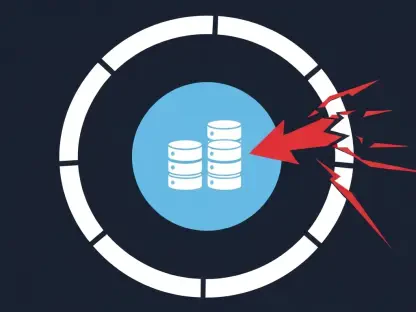In a striking turn of events, Apple has captured the smartphone market’s attention with a staggering 25% demand surge for the iPhone 17 series compared to its predecessor, the iPhone 16, during the initial pre-order phase. This statistic not only underscores a significant shift in consumer sentiment but also highlights Apple’s strategic prowess in navigating a highly competitive landscape. As the tech giant redefines market expectations in 2025, this analysis aims to dissect the factors fueling this unprecedented interest and evaluate its implications for the industry.
The importance of this demand spike cannot be overstated, especially following a period of lukewarm reception for the prior model. With the iPhone 17 lineup—including the standard model, Pro, Pro Max, and the innovative iPhone Air—Apple appears to have reignited consumer enthusiasm through a blend of design evolution and production adjustments. This examination will delve into the data behind these trends, offering insights into how each model contributes to the overall market dynamics.
By exploring current patterns and projecting future trajectories, this analysis seeks to provide a comprehensive view of Apple’s position in the smartphone sector. The focus will span from historical context to specific model performance, ensuring a thorough understanding of what this resurgence means for stakeholders ranging from retailers to tech enthusiasts.
Diving Deep: Market Trends and Data Insights
Historical Context: Apple’s Journey Through Market Highs and Lows
To grasp the significance of the iPhone 17 series’ success, it’s critical to consider Apple’s recent journey in the smartphone domain. Over the past few years, the company has maintained a steady design philosophy since the iPhone 11, focusing on incremental upgrades in performance and features. However, the iPhone 16 faced challenges with underwhelming pre-order numbers, sparking concerns about market saturation and a perceived lack of innovation among consumers.
This backdrop of fluctuating consumer interest sets the stage for the current analysis. Economic uncertainties and fierce competition from Android manufacturers have tested Apple’s dominance, pushing the brand to rethink its approach. The notable dip in excitement for the previous model highlighted a demand for bolder changes, a challenge Apple has seemingly met with the latest lineup’s refreshed aesthetics and strategic introductions.
Understanding these historical ebbs and flows provides a lens through which to view the current 25% demand increase. This figure reflects not just a numerical gain but a restoration of consumer confidence in Apple’s ability to deliver compelling products. As the market evolves, this historical perspective anchors the discussion on how past lessons have shaped present triumphs.
Current Performance: Unpacking the iPhone 17 Series’ Demand Surge
Turning to the present, the iPhone 17 series has demonstrated robust market traction, with production targets for the third quarter of this year rising by 25% over the same period for the iPhone 16. Despite this ambitious ramp-up, shipping lead times for the core models—iPhone 17, 17 Pro, and 17 Pro Max—have stretched by approximately one week, signaling that consumer demand continues to outpace supply. This imbalance underscores a strong market appetite for Apple’s latest offerings.
Among the lineup, the iPhone 17 Pro Max emerges as the standout performer, with production increased by an impressive 60% compared to its predecessor. Even with this boost, delivery delays persist, reflecting the model’s allure among buyers seeking premium features like superior camera systems and enhanced processing power. This trend points to a sustained preference for high-end devices within Apple’s consumer base, particularly in markets valuing cutting-edge technology.
Meanwhile, the broader reception across the standard and Pro models also indicates widespread appeal, driven by a design overhaul that breaks from years of incremental updates. Industry insights suggest that Apple’s supply chain adjustments have been pivotal in attempting to meet this demand, though challenges remain in fully aligning production with consumer expectations. These dynamics reveal a market energized by innovation, setting a strong foundation for further analysis of specific model impacts.
Model Spotlight: The Rise of iPhone Air as a Market Differentiator
A key highlight of the iPhone 17 series is the introduction of the iPhone Air, a sleek replacement for the underperforming Plus variant. With an ultra-thin design targeting style-conscious consumers, Apple has tripled production targets for this model compared to the previous year’s equivalent. Unlike the core models, the iPhone Air shows no shipping delays, indicating precise demand forecasting at launch and a balanced market entry.
This model’s performance suggests a calculated strategy by Apple to capture a niche segment prioritizing aesthetics over raw specifications. While initial reception appears stable, the long-term viability of the iPhone Air hinges on sustained consumer interest and its ability to stand out against competitors offering similar designs at lower price points. The absence of delivery bottlenecks offers Apple a unique opportunity to build momentum for this newcomer.
Further scrutiny reveals potential challenges in positioning the iPhone Air as a distinct value proposition. Some market segments may misinterpret its focus on design as a compromise on performance, necessitating clear marketing to highlight its unique strengths. As Apple navigates this model’s trajectory, its success could redefine how the company approaches innovation in form factor within the competitive smartphone space.
Projections: Forecasting Apple’s Market Position
Looking ahead, the early success of the iPhone 17 series signals several emerging trends that could shape Apple’s market position through 2025 and beyond. The emphasis on design differentiation, as seen with the iPhone Air, aligns with growing consumer demand for devices that blend style with functionality. Future iterations might incorporate advanced technologies like foldable screens or deeper AI integrations, further pushing the envelope of innovation.
Economic factors, including inflation and currency fluctuations, could influence pricing strategies and demand in key regions over the next few years. Regulatory pressures around sustainability and electronic waste may also prompt Apple to adopt greener production practices, impacting how future models are designed and marketed. These external forces will test the company’s ability to maintain its current momentum while adapting to global shifts.
Analytic projections indicate that Apple will likely refine its production forecasting using advanced data tools to minimize lead time issues for high-demand models like the Pro Max. The iPhone Air’s trajectory remains a variable, with the potential to either solidify a lasting niche or falter if competitors counter with comparable offerings. These forecasts highlight a critical juncture for Apple, where strategic agility will determine its standing in an ever-evolving market.
Reflecting on Insights: Strategic Pathways Forward
Looking back, the analysis of the iPhone 17 series’ 25% demand surge over the iPhone 16 paints a picture of Apple’s remarkable recovery in the smartphone market. The robust pre-order performance across the core models, coupled with the Pro Max’s dominance and the iPhone Air’s steady debut, showcases a brand adept at rebounding from past setbacks. These findings underscore the impact of design innovation and supply chain adjustments in restoring consumer trust.
For stakeholders, the implications of this market shift offer clear actionable steps. Retailers and businesses are encouraged to secure early stock of high-demand models like the Pro Max to capitalize on consumer interest, while also exploring promotional strategies for the iPhone Air to build its market presence. Apple itself could benefit from further production increases for core models and targeted campaigns to clarify the unique appeal of newer entries in the lineup.
Moving forward, a focus on anticipating technological trends and consumer preferences emerges as vital for sustaining this growth. Continuous monitoring of competitive responses and economic conditions will provide additional guidance for Apple’s next moves. This resurgence serves as a testament to the power of strategic adaptation, leaving the industry poised to observe how Apple will leverage these lessons in future endeavors.









